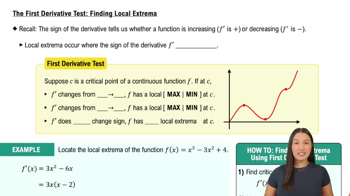38. What values of a and b make f(x) = x^3 + ax^2 + bx have
b. a local minimum at x = 4 and a point of inflection at x = 1?
 Verified step by step guidance
Verified step by step guidance Verified video answer for a similar problem:
Verified video answer for a similar problem:



 5:58m
5:58mMaster Finding Extrema Graphically with a bite sized video explanation from Patrick
Start learning